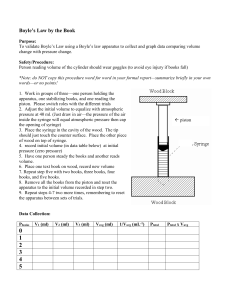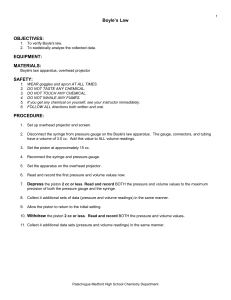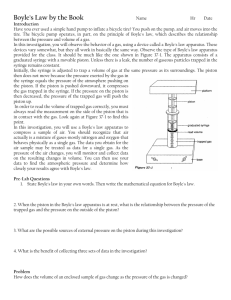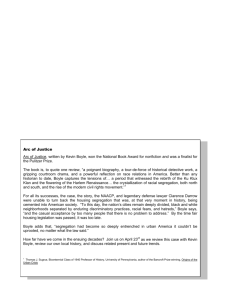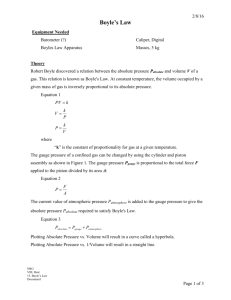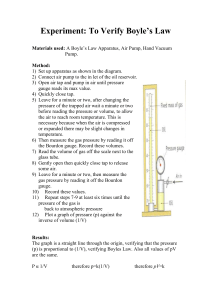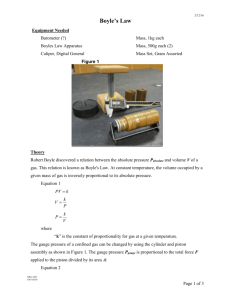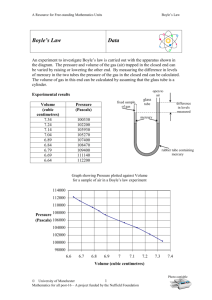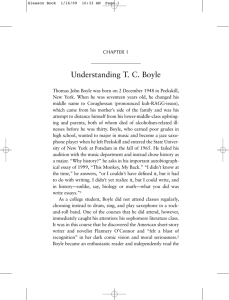Boyle's Law by the Book
advertisement
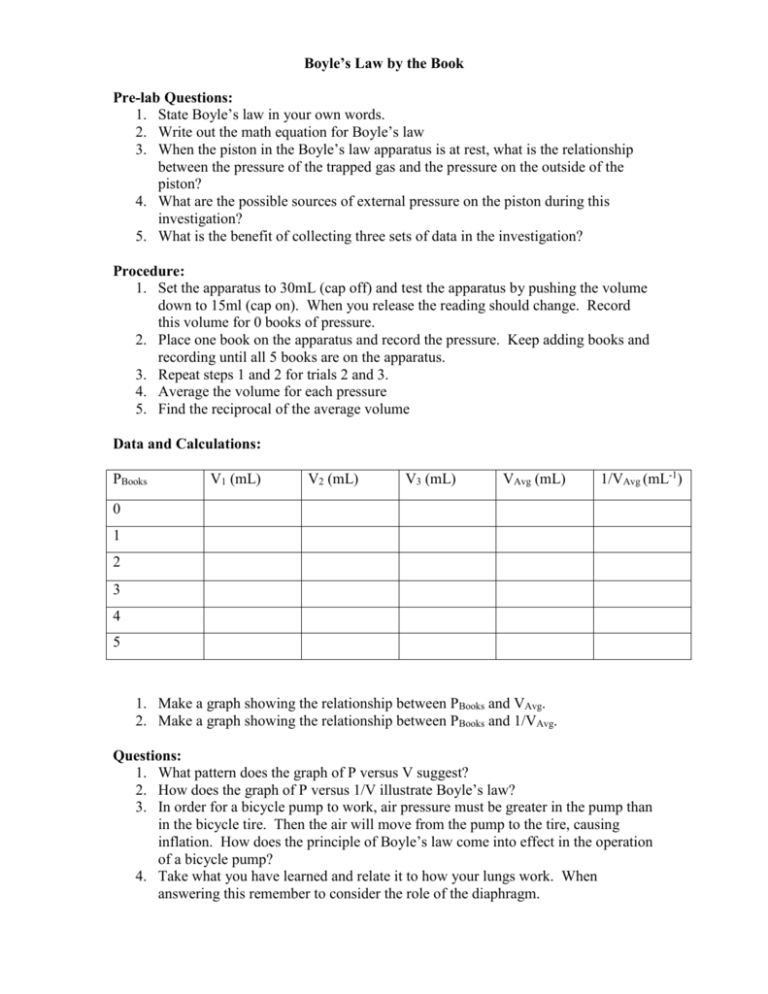
Boyle’s Law by the Book Pre-lab Questions: 1. State Boyle’s law in your own words. 2. Write out the math equation for Boyle’s law 3. When the piston in the Boyle’s law apparatus is at rest, what is the relationship between the pressure of the trapped gas and the pressure on the outside of the piston? 4. What are the possible sources of external pressure on the piston during this investigation? 5. What is the benefit of collecting three sets of data in the investigation? Procedure: 1. Set the apparatus to 30mL (cap off) and test the apparatus by pushing the volume down to 15ml (cap on). When you release the reading should change. Record this volume for 0 books of pressure. 2. Place one book on the apparatus and record the pressure. Keep adding books and recording until all 5 books are on the apparatus. 3. Repeat steps 1 and 2 for trials 2 and 3. 4. Average the volume for each pressure 5. Find the reciprocal of the average volume Data and Calculations: PBooks V1 (mL) V2 (mL) V3 (mL) VAvg (mL) 1/VAvg (mL-1) 0 1 2 3 4 5 1. Make a graph showing the relationship between PBooks and VAvg. 2. Make a graph showing the relationship between PBooks and 1/VAvg. Questions: 1. What pattern does the graph of P versus V suggest? 2. How does the graph of P versus 1/V illustrate Boyle’s law? 3. In order for a bicycle pump to work, air pressure must be greater in the pump than in the bicycle tire. Then the air will move from the pump to the tire, causing inflation. How does the principle of Boyle’s law come into effect in the operation of a bicycle pump? 4. Take what you have learned and relate it to how your lungs work. When answering this remember to consider the role of the diaphragm.
